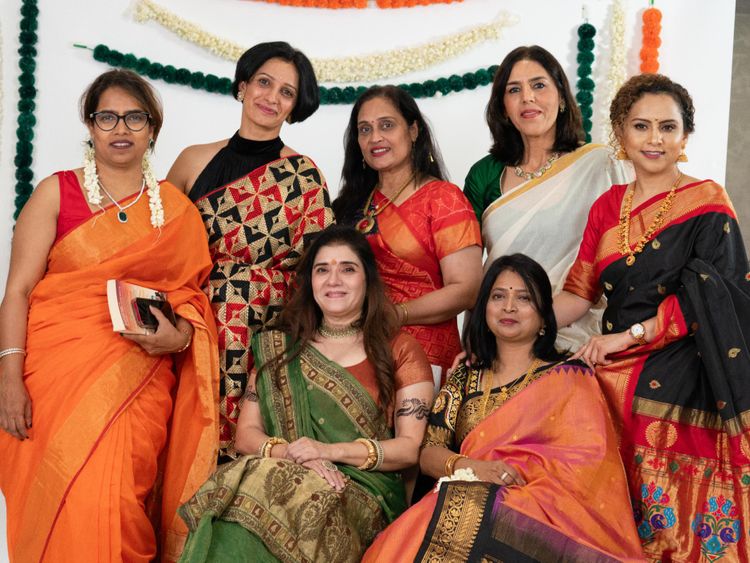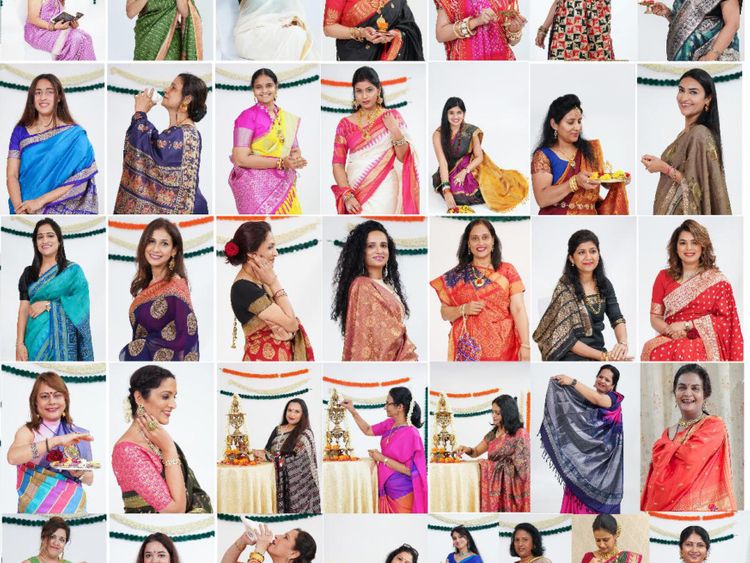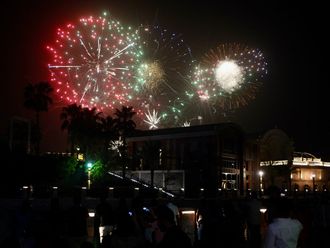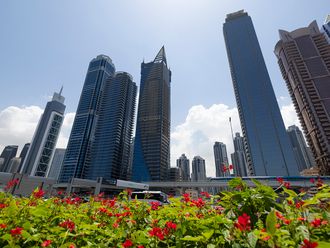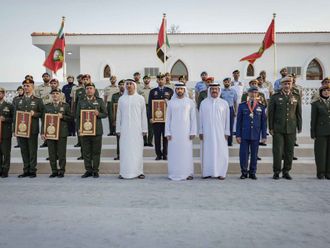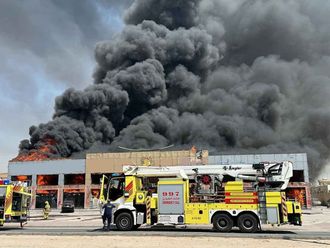
Dubai: A group of female Indian doctors in the UAE are making waves this Indian Independence Day with a unique music video dedicated to the weavers of India and the national integration of their motherland.
The frontline “heroines” were united for the love of saree, the traditional un-stitched stretch of woven fabric worn by Indian women. The members of DNS Al Emarat (Doctors in Sarees in the UAE) group had hit the headlines with their tricolour drapes during “Azadi ka Amrit Mahotsav”, a year-long celebration to mark the 75 years of India’s independence.
On the eve of the 77th Indian Independence Day on August 15, the DNS doctors have come up with yet another tribute to their motherland through its handloom weavers whose creations represent the unity in its diversity.
The project took shape from the concept and theme initiated by Dr Sowjanya Satish, an anaesthesiologist with Fakeeh University Hospital.
The song “Mile sur Mera tumhara, to sur bane hamara,” which symbolises national integration and unity in diversity, was aptly proposed as the background score of the video by Dr Parul Dubey, an anaesthesiologist in Rashid Hospital.
Dr Punam Bijlani, a plastic surgeon, took utmost care on each and every weave worn.
Other core executive team members included Dr Shamna Kuloth, ophthalmologist, Dr Ritu Khare, laparoscopic surgeon, Dr Sumeet Sally, hospitalist and Dr Ekta Sharma, anaesthesiologist.
Patriotic gesture
Dozens of DNS doctors from all over the UAE enthusiastically got involved in adjusting their hectic work schedules for the patriotic project.
“We could gather and present 64 different varieties of hand woven sarees from all over India,” Dr Sowjanya told Gulf News.
Dr Punam said: “In a stellar collection of handloom sarees, we have tried to embody and highlight the artistry, heirloom, care, and wealth from every corner of our vast country.”
In doing so, the doctors said they also pay homage to the looms that must be kept clattering. It was also a learning experience for them. “Not everyone knows about all the sarees of all the states and regions. This project gave us an overall understanding about the myriad types of sarees which are popular in various Indian states.”
Whether it is Paithani or Pochampally design, be it in silk, cotton, or linen, these swaths of fabric are more than just simple garments. Draping a saree is like embracing the culture of the place of its origin.
Dr Monika Kaushal, consultant neonatologist, consultant paediatrician and medical director with Emirates Specialty Hospital, who hails from Himachal Pradesh said: “While India is my janma bhumika (motherland) and the UAE has been my karam bhumi (land of action) for the past 19 years. I feel proud, privileged and honoured to be part of both these nations. Freedom in mind, faith in words, pride in our heart, memories in our soul, we salute both the countries and wish to continue to practise the same morals our amazing countrymen and freedom fighters held during the struggle to build the independent India.”
Cultural diversity
She said the DNS group offers a glimpse of India through a symbol of its ethnic and cultural diversity.
“This year, when India enters 77th year of independence, we thought of taking the theme of handloom which denotes nationalism, culture and sovereignty and a way to pay our gratitude and respect to all weavers of India. Weaving involves originality, endurance, focus, and the talents that reverberate well with doctors. We wore handloom sarees signifying diverse provinces weaving skills and designs, conserving traditional artistries and displaying our support to weavers.”
“Being a Himachali, I chose Kashmiri kani along with kullu topi, chamba rumal, all have a story to tell and has weavers’ dream on the fabric. I thoroughly enjoyed seeing the richness of each state and the weavers’ creativity.”
Hailing from Rajasthan, Dr Meenakshi Sesama, specialist paediatrician and certified breastfeeding specialist, Prime Healthcare Group, said: “Life is all about accepting ourselves as we are. It’s a legacy to be transferred over generations. And we the Indian doctors in the UAE are trying to do the same. Proudly, I say I am an Indian who can thrive in any corner of the world draped in a saree. It is a dress that makes my nationality self-explanatory. People would know where I belong to without saying.”
A native of Andhra Pradesh, Nazreen Shahena, G.P dentist/implantologist with Clover Medical Centre in Bur Dubai, said: “It’s a great pleasure being a part of the DNS doctors group, where all the doctors of different states of India met under one roof with one culture, with sarees.”
Beyond the colourful fabrics and intricate designs, she said it had reaffirmed the importance of cultural diversity in medicine. “Our attire had become a visual testament to the fact that diversity enriches our profession, fosters empathy, and strengthens our ability to provide patient-centred care. This experience was a poignant reminder that medical knowledge knows no borders, enhancing our ability to connect, understand, and heal.”
Though it was a display of myriads of colours through their sarees, the most favourite of the doctors remained the “thiranga/tricolour,” which they saluted with special decorations.
Typically worn on special occasions, such as weddings and festivals, the unstitched attire is wrapped around the body and draped over the shoulders and head. There are many styles of doing this and it takes skill and experience to master the art of wearing a saree.
Several dozens types of sarees from different States of India are known. The saree is a garment also worn in Sri Lanka, Pakistan, Bangladesh and Nepal.


